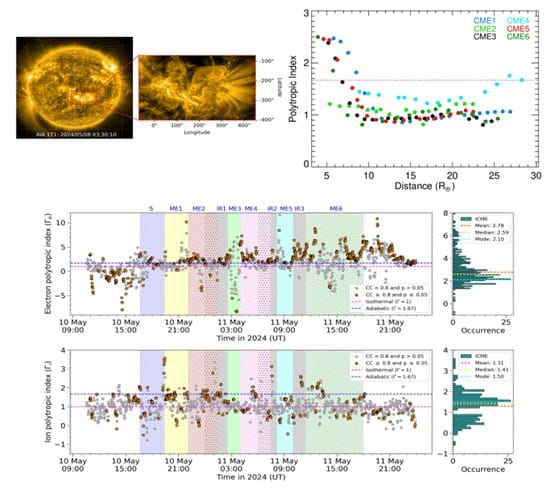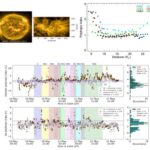New Delhi: Our solar family is also among the enigmatic puzzles drifting through space. In this context, astronomers are striving to understand the Sun’s mysterious world. Now, astronomers have uncovered the complex story behind a series of powerful solar eruptions, which could lead to the detection of one of the most significant solar storms observed in the past 20 years.
Coronal Mass Ejections (CMEs) are massive bursts of magnetized plasma from the Sun’s corona. When such solar eruptions head towards Earth, they can trigger geomagnetic storms. These storms can disrupt satellite operations, communication systems, and power grids. Until now, it remained unclear how CMEs evolve as they travel from the Sun to Earth.
A team of solar astrophysicists led by Dr. Vagish Mishra, a faculty member at the Indian Institute of Astrophysics (IIA), used observations from NASA and ESA space missions to study this phenomenon. They developed a model to analyze how a rare sequence of six interacting solar eruptions, observed from the IIA’s Indian Astronomical Observatory in Hanle, Ladakh, interacted with one another and thermally evolved while traveling from the Sun to Earth.
The team not only traced the paths of these eruptions but also tracked their temperatures and magnetic states as they spread across the solar system. They found that these solar clouds carry not just heat, but also change their thermal behavior mid-journey. Initially, CMEs release heat, but then reach a phase where they absorb and retain it. Scientists also discovered something more: the final storm cloud contained two interwoven magnetic structures—referred to as “double flux ropes.” These acted like tangled magnetic strands.
Published in the journal Astronomy and Astrophysics, these findings mark a major step forward in improving space weather forecasting models—particularly in predicting the impacts of complex CME events on Earth’s magnetic field. Vagish Mishra noted that his research team is eager to incorporate observations from India’s Aditya-L1 space mission, including data from the Visible Emission Line Coronagraph (VELC), near-Sun spacecraft observations, and near-Earth readings from the Aditya Solar Wind Particle Experiment (ASPEX).









